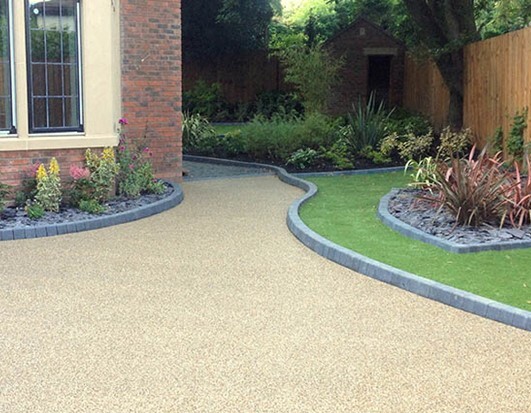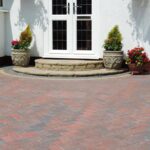Creating a stunning resin pathway can enhance the beauty and functionality of your outdoor space. With the ability to customize colors, textures, and designs, resin pathways offer a versatile option for homeowners looking to elevate their gardens, yards, or outdoor areas. This article provides essential tips and ideas to help you design a resin pathways that is both visually appealing and practical.
1. Define the Purpose of Your Pathway
Before you begin designing, it’s crucial to define the purpose of your pathway:
- Functional Pathway: If the primary purpose is to provide access from one area to another, consider the most efficient route. Ensure the pathway is wide enough for foot traffic and blends seamlessly with the surrounding landscape.
- Decorative Feature: If your pathway is meant to be a focal point in your garden, think about how it can complement other elements, such as flower beds, seating areas, or water features.
2. Choose the Right Location
The placement of your pathway significantly impacts its design. Here are some considerations:
- Natural Flow: Follow the natural lines of your garden. A pathway that curves gently will create a more inviting and organic feel than a straight, rigid design.
- Access Points: Ensure your pathway connects key areas, such as entrances, patios, and garden features, making navigation easy and intuitive.
- Sunlight and Shade: Consider how sunlight and shade will affect your pathway. Areas that receive more sunlight may require resins that are UV resistant to prevent fading.
3. Select the Ideal Resin Type
Choosing the right type of resin is critical for both aesthetics and durability:
- Epoxy Resin: Known for its strength and longevity, epoxy resin is an excellent choice for pathways that will experience heavy foot traffic. It can be formulated in various colors and finishes.
- Polyurethane Resin: This flexible resin is perfect for outdoor pathways as it withstands weather changes and moisture. It is also available in a wide range of colors and textures.
- Acrylic Resin: Ideal for lighter traffic areas, acrylic resin dries quickly and offers a variety of vibrant colors, making it a great option for decorative pathways.
4. Incorporate Color and Texture
The color and texture of your resin pathway play a significant role in its overall appeal:
- Color Palette: Choose colors that harmonize with your home’s exterior and surrounding landscape. Neutral tones, like greys and browns, offer a classic look, while brighter colors can create a lively atmosphere.
- Texture: Adding texture can enhance safety and aesthetic appeal. Consider textured finishes that provide grip, especially in wet conditions, or incorporate aggregates for a more natural look.
- Patterns and Designs: You can create unique patterns, such as geometric designs or a random stone effect, to add character to your pathway. Custom designs can make your pathway a standout feature in your garden.
5. Consider the Width and Shape
The width and shape of your pathway should be functional yet visually appealing:
- Width: Standard pathways are usually 3-4 feet wide, allowing for comfortable passage. If you expect high foot traffic, consider widening the path to accommodate more users.
- Shape: Curved pathways can create a more inviting and relaxed atmosphere compared to straight paths. Use gentle curves to guide visitors through your garden and highlight specific features.
6. Integrate Landscaping Elements
Incorporating landscaping elements into your resin pathway design can enhance its beauty:
- Borders and Edges: Use stones, bricks, or plants to create borders around your pathway. This can define the space and add a decorative touch.
- Planters and Greenery: Integrate planters or raised beds along the sides of your pathway. This adds color and texture while softening the edges of the path.
- Lighting: Incorporate outdoor lighting, such as solar lights or built-in LEDs, along your pathway. This not only enhances safety during nighttime but also adds a magical ambiance to your garden.
7. Personalize Your Pathway
Adding personal touches can make your resin pathway uniquely yours:
- Custom Inlays: Consider adding custom inlays or designs that reflect your personality or interests. This could include patterns, symbols, or even your initials.
- Seasonal Decor: Use seasonal decorations, such as flowers in the summer or decorative stones in the winter, to keep your pathway looking fresh and inviting throughout the year.
- Functional Features: Incorporate seating areas or small tables along the pathway to create resting spots where you can enjoy your garden.
8. Plan for Maintenance
While resin pathways are relatively low maintenance, planning ahead can help ensure longevity:
- Regular Cleaning: Periodically clean your pathway to prevent dirt buildup and maintain its appearance. Use a gentle pressure washer or a hose with a soft brush.
- Inspection: Regularly check for any signs of wear, cracks, or discoloration. Addressing minor issues promptly can prevent costly repairs in the future.
Conclusion
Designing a stunning resin pathway involves careful consideration of purpose, location, materials, and aesthetics. By following these tips and ideas, you can create a beautiful and functional pathway that enhances your outdoor space and reflects your personal style. With the right design, your resin pathway can become a cherished feature of your garden for years to come.


